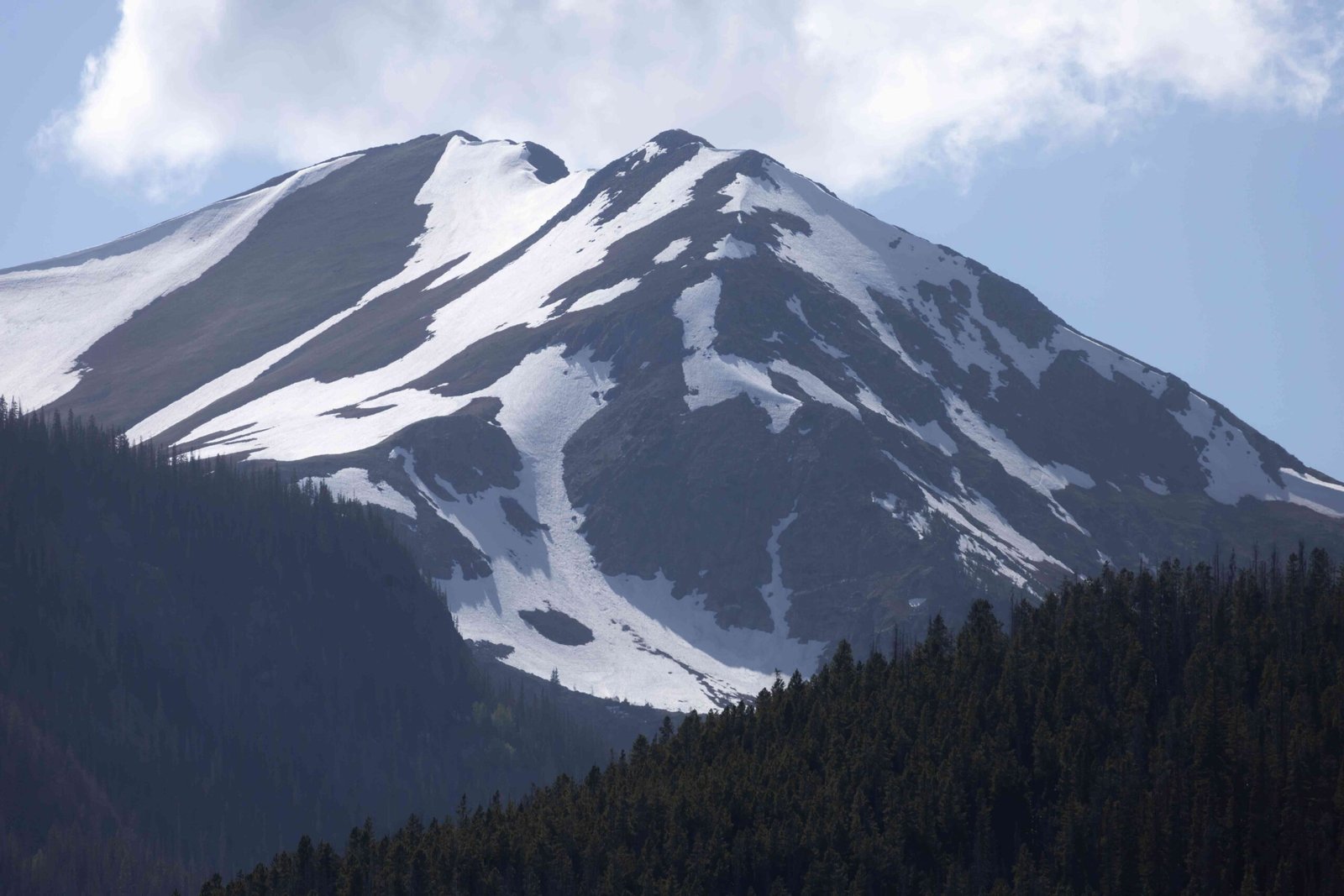Longs Peak and Bear Lake are two iconic destinations in Rocky Mountain National Park. Longs Peak, standing at 14,259 feet, offers a challenging climb with breathtaking views. Bear Lake, a scenic alpine lake, serves as a hub for various hiking trails suitable for all skill levels. Both locations showcase the park’s diverse landscapes, from rugged mountain terrain to serene lakeside paths, attracting hikers, climbers, and nature enthusiasts year-round.
What Makes Longs Peak a Challenging Climb?

Longs Peak, the tallest mountain in Rocky Mountain National Park, is renowned for its difficult ascent. The Keyhole Route, the most popular path to the summit, presents a formidable challenge even for experienced hikers and climbers.
Trail Statistics:
- Length: 14.5 miles round trip
- Elevation Gain: 5,100 feet
- Difficulty: Very difficult, technical climb
- Class: 3 scrambling with exposed sections
Key Landmarks on the Longs Peak Trail:
- Boulder Field: Where the defined trail ends, requiring navigation via rock cairns
- Keyhole: Marks the transition from hiking to technical climbing
- The Trough: A steep, rocky gully often containing ice and snow
- The Narrows: An exposed ledge with significant drop-offs
- The Homestretch: The final steep ascent to the summit
What Weather Conditions Should Climbers Expect on Longs Peak?

Weather on Longs Peak is notoriously unpredictable and can be severe. Climbers should be prepared for:
- High winds
- Sudden temperature drops
- Potential snow and ice, even in summer
- Rapid weather changes
Seasonal Challenges:
| Season | Challenges |
|---|---|
| Summer | Afternoon thunderstorms, crowded trails |
| Fall | Early snowfall, shorter daylight hours |
| Winter | Deep snow, ice, extreme cold, high winds |
| Spring | Lingering snow and ice, unstable weather |
What Gear is Essential for Climbing Longs Peak?
Proper equipment is crucial for a safe ascent of Longs Peak. Essential gear includes:
- Sturdy hiking boots or climbing shoes
- Layered clothing for changing weather
- Helmet for protection against falling rocks
- Navigation tools (GPS, map, compass)
- First aid kit and emergency shelter
- Crampons and ice axe (for winter climbs)
How Does Bear Lake Differ from Longs Peak?
While Longs Peak offers a strenuous climbing experience, Bear Lake provides a more accessible and family-friendly environment. Located at 9,475 feet elevation, Bear Lake serves as a trailhead for several popular hikes.
Bear Lake Trail Details:
- Length: 0.8-mile loop
- Difficulty: Easy, wheelchair accessible
- Features: Scenic views of surrounding peaks, interpretive signs
What Hiking Options are Available from Bear Lake?
Bear Lake is the starting point for several scenic trails:
- Dream Lake Trail:
- Distance: 2.4 miles round trip
- Difficulty: Moderate
-
Highlights: Views of Hallett Peak, alpine lake scenery
-
Emerald Lake Trail:
- Distance: 3.8 miles round trip
- Difficulty: Moderate to challenging
-
Highlights: Three alpine lakes, mountain vistas
-
Flattop Mountain Trail:
- Distance: 8.8 miles round trip
- Difficulty: Challenging
- Highlights: Panoramic views from the Continental Divide
How Does the Ecosystem Vary Between Longs Peak and Bear Lake?
The ecosystems of Longs Peak and Bear Lake showcase the diverse environments within Rocky Mountain National Park:
Longs Peak:
- Alpine tundra ecosystem above treeline
- Sparse vegetation adapted to harsh conditions
- Home to hardy wildlife like marmots and pikas
Bear Lake Area:
- Subalpine ecosystem with coniferous forests
- Rich variety of plant life, including wildflowers in summer
- Wildlife such as elk, mule deer, and various bird species
What are the Best Times to Visit Longs Peak and Bear Lake?
The optimal visiting times for these locations depend on your goals and experience level:
Longs Peak:
- Summer (July-September): Most favorable weather for summit attempts
- Early morning starts: Recommended to avoid afternoon thunderstorms
Bear Lake:
- Year-round accessibility: Different experiences each season
- Summer and early fall: Peak season for hiking and wildlife viewing
- Winter: Snowshoeing and cross-country skiing opportunities
How Can Visitors Prepare for High Altitude at Both Locations?
Both Longs Peak and Bear Lake are at high elevations, which can affect visitors:
- Acclimatize gradually by spending time at lower elevations first
- Stay hydrated and drink plenty of water
- Take frequent breaks and pace yourself
- Be aware of altitude sickness symptoms (headache, nausea, dizziness)
- Descend immediately if symptoms worsen
What Conservation Efforts are in Place for These Areas?
Rocky Mountain National Park implements various conservation measures:
- Leave No Trace principles: Encouraged for all visitors
- Timed entry permit system: Manages visitor numbers during peak seasons
- Trail maintenance: Regular upkeep to prevent erosion
- Wildlife protection: Regulations to minimize human-wildlife conflicts
- Education programs: Inform visitors about ecosystem preservation
By understanding the unique characteristics and challenges of Longs Peak and Bear Lake, visitors can better appreciate and safely enjoy these iconic destinations within Rocky Mountain National Park. Whether seeking an adventurous climb or a scenic stroll, both locations offer unforgettable experiences in the heart of the Colorado Rockies.
References:
1. https://www.rockymountainhikingtrails.com/rocky-mountain-national-park-trail-maps.htm
2. https://www.nps.gov/romo/planyourvisit/upload/Longs-Peak-Area-Trail-Guide-2022_GPO.pdf
3. https://www.14ers.com/peaks/10015/longs-peak

